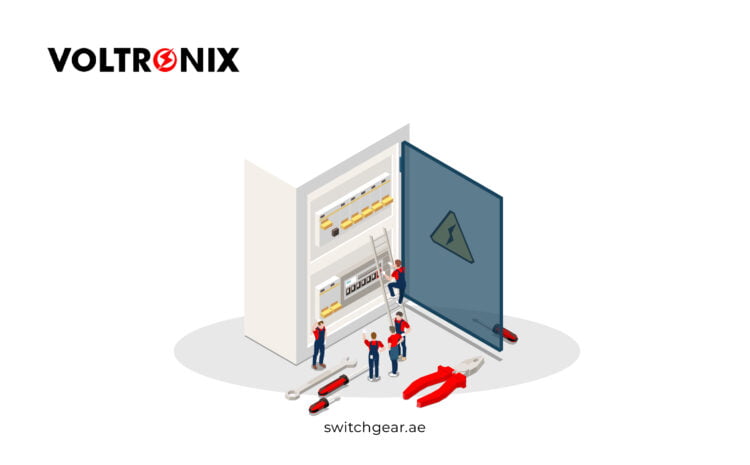
Understanding the Differences Between ACB and MCCB for Your Electrical Systems
The circuit breaker holds a significant position among the essential components in electric circuit systems, which has the ability to open or close an electric circuit either regularly or in the event of a malfunction. Different circuit breakers are available according to the operating voltage and fault level. These include the MCB (Miniature Circuit Breaker), MCCB (Moulded Case Circuit Breaker), ACB (Air Circuit Breaker), OCB (Oil Circuit Breaker), VCB (Vacuum Circuit Breaker), SF6 Circuit Breaker, and others.Let’s look into MCCB now.
What is MCCB?
Molded Case Circuit Breaker, or MCCB, is an automatic electrical switch that protects equipment from overload, short circuits, sudden overcurrent, and earth faults. This type of circuit breaker is available for safeguarding electrical circuits with a current rating of up to 3200 A.
After gaining an idea of MCCB, let’s understand-
What is ACB?
ACB denotes Air Circuit Breaker. This type of circuit breaker uses air as the arc quenching medium. ACB is mainly used in low-voltage applications when the supplying voltage is less than 450 volts. As a result, extensive use of air circuit breakers can be seen in distribution panels. Short circuit protection and overcurrent protection are provided by ACB when electrical circuits range in size from 600 amps to 10-kilo amps.
Let us now get information on the differences between ACB and MCCB.
Differences between ACB and MCCB
- Current Rating
Among the most essential differences between ABB and MCCB is their current rating. The usual range of the current rating of MCCB is up to 32000 A, which is less. The current rating of ACB is higher than MCCB, which is 600 K to 10kA.
- Circuit breaking ability
MCCB has a lower breaking capacity than ACB, while ACB has a higher circuit-breaking ability.
- Utilization
The utilization category for MCCB is ‘A,’ whereas the utilization category for ACB is ‘B.’
- Operation
Both circuit breakers interrupt the circuit when a defect occurs, but one delivers more protection and control. Overall, compared to the ACB, MCCB operation has fewer characteristics.
The inclusion of more accessories is possible for ACB than for MCCB.
- Calibrating the trip threshold
The tripping threshold adjustment is easy for MCCB, but this is somewhat intricate for ACB.
- Voltage
ACB can deal with high current or voltage applications. On the other hand, the structure of MCCB is designed in such a way that it can bear only low-voltage circuits.
- Size
The size of ACB is three to four times bigger in physical size than MCCB. Molded Case Circuit Breakers are designed for lower current applications, which is why they can be smaller than ACBs. The reduced current-carrying capacity of MCCBs allows for a more compact design while maintaining circuit protection.
- Accuracy
MCCBs employ many technologies; they are more accurate than ACBs. The advancement in technology has increased the precision and accuracy of circuit breakers.
Operating and fault voltages are two considerations when choosing ACBs for a circuit. Performance-wise, ACB characters are less effective than MCCBs.
- Compatibility
The compatibility with frequent operation and accuracy, the circuit of MCCB is used at the load end.
- Cost
The expense of MCCBs is less. In contrast, ACBs are costlier.
The distinctions between MCCB and ACB circuit breakers must also be understood while performing any electrical wiring operation. While both breakers are reliable and effective in offering overload protection, they serve distinctive purposes and find applications in different scenarios. Our team has in-depth knowledge which can guide you without any challenges, and we are always available to assist you. Lets touch with our Electrical Switchgear Company in dubai for detailed information.

